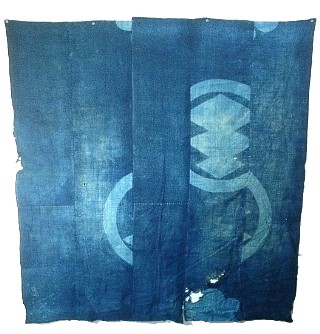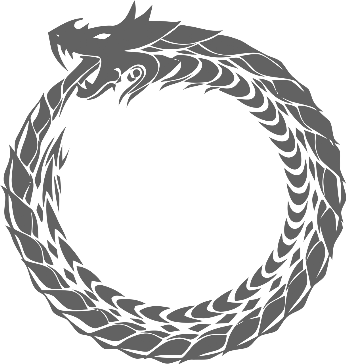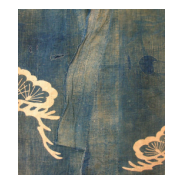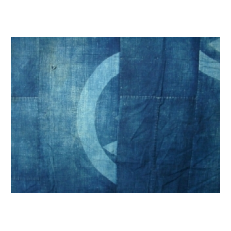
Japan, Taisho (circa 1910), 165x34.5 cm
____________________________________________________________________________________________________________________________
Yogi (literally ‘night wear’) can be defined as a ‘sleeping kimono’ or a ‘kimono-shaped bedding’. Because they were large, thick, soft robes, the yogi solved the problem of night time drafts by wrapping all around the sleeper.
It was meant to fit tightly around the shoulders and neck, providing excellent protection against the winter cold.
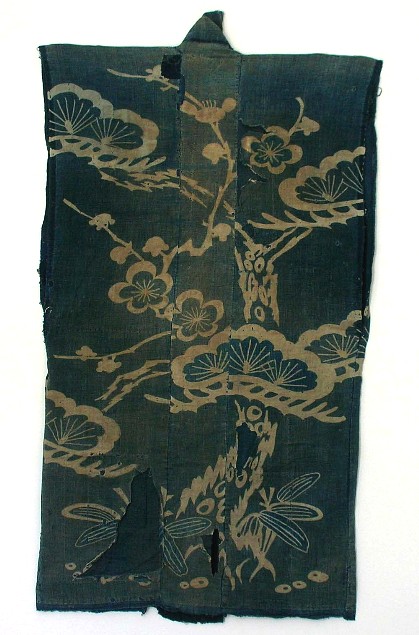
The outside still displays an impressive ‘tsutsugaki’ design called ‘shochikubai’, or ‘the three winter friends’ a composition made of pine (eternity), bamboo (integrity) and plum (cleverness) blossoms, that all together symbolize vitality and courage. This collage-like construction of Edo and Meiji era hand-spoon and hand-woven fabrics and patches offers us a veritable encyclopedia of cotton indigo from those periods. Condition of course plays no role with ‘boro’, and they should be judged upon their visual impact, mainly. This is surely a truly great object in this respect, and a lovely thing to own, I would dare to say…
______________________________________________________________________________________________________________________________

Boro panel *
Japan, Taisho (circa 1920), cm 186x37.
There is a class of Japanese folk textiles known as boro, which literally translated means "rags" or "ragged." Broadly speaking, boro textiles are the patched, mended and heavily stitched indigo-dyed cotton cloths whose history extends back to the nineteenth century and continues on through the early-to-mid twentieth century, and to fully appreciate they apart from their obvious artistic appeal, one has to delve into their history by understanding something of cotton's cultural significance in Japan.
______________________________________________________________________________________________________________________________
Japan 153 x 156 cm
It is made of wonderful hand woven/ hand spun cotton, and it has very soft and comfortable touch(medium thick).
